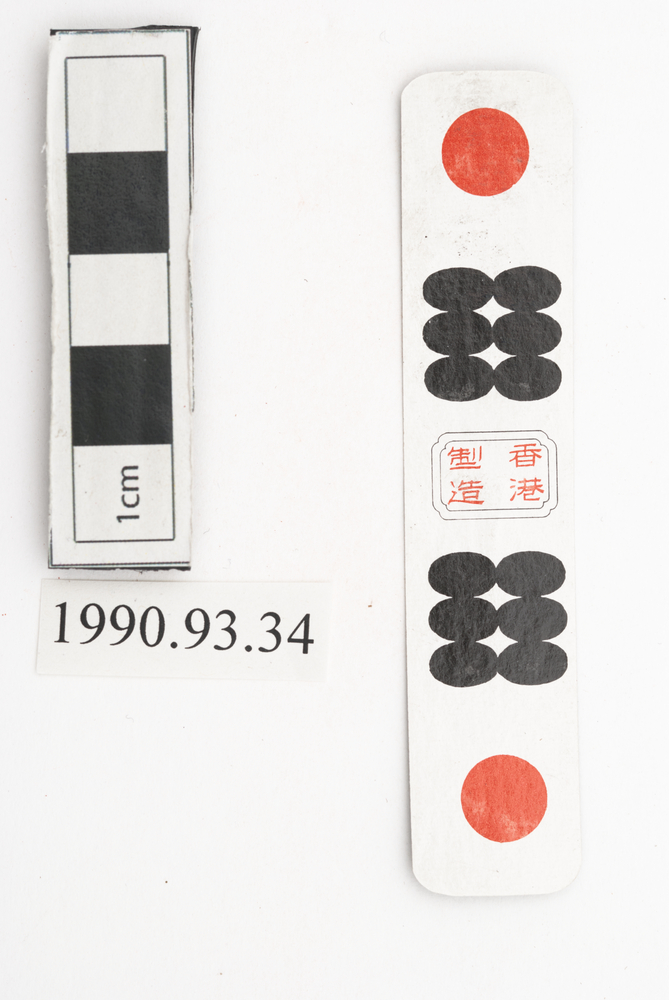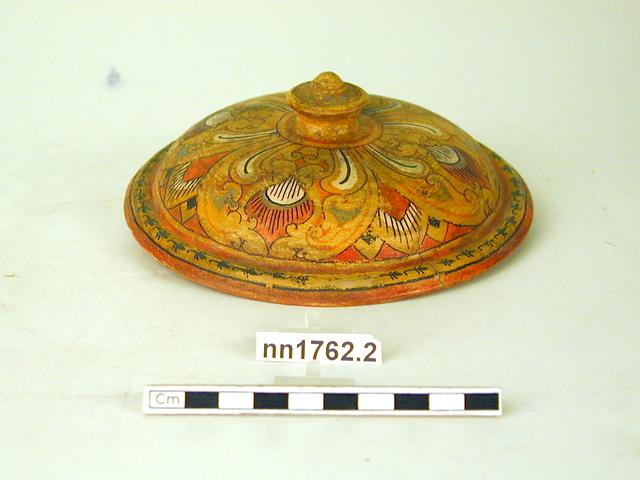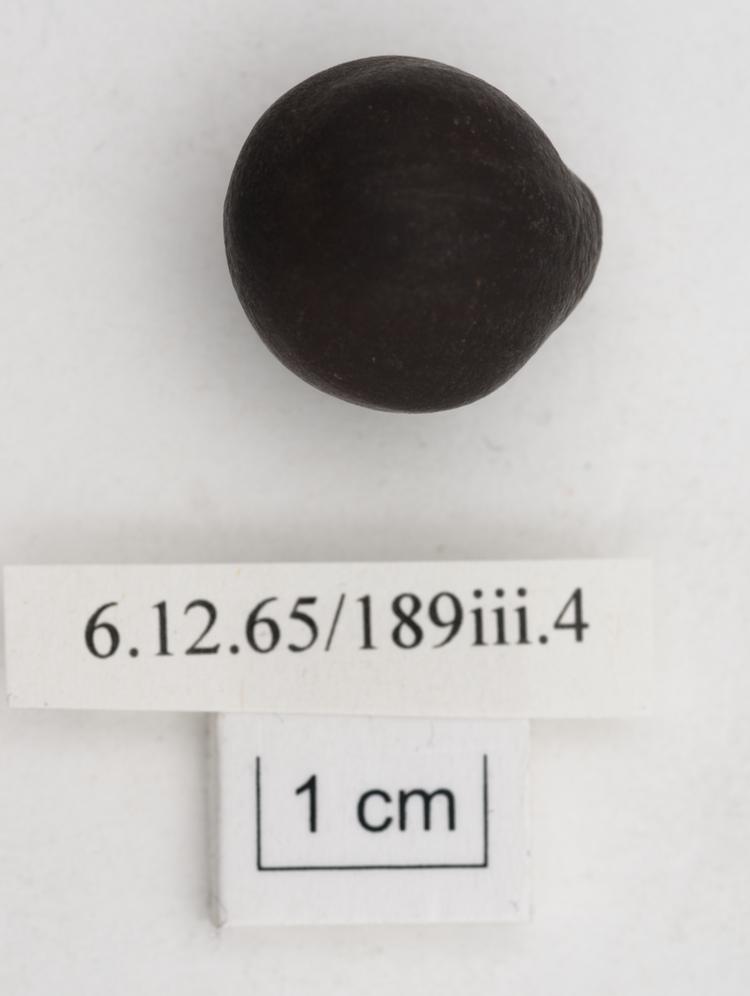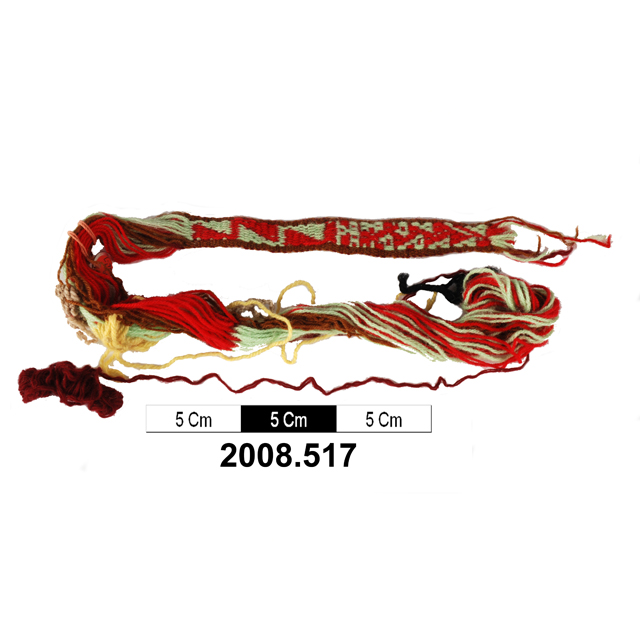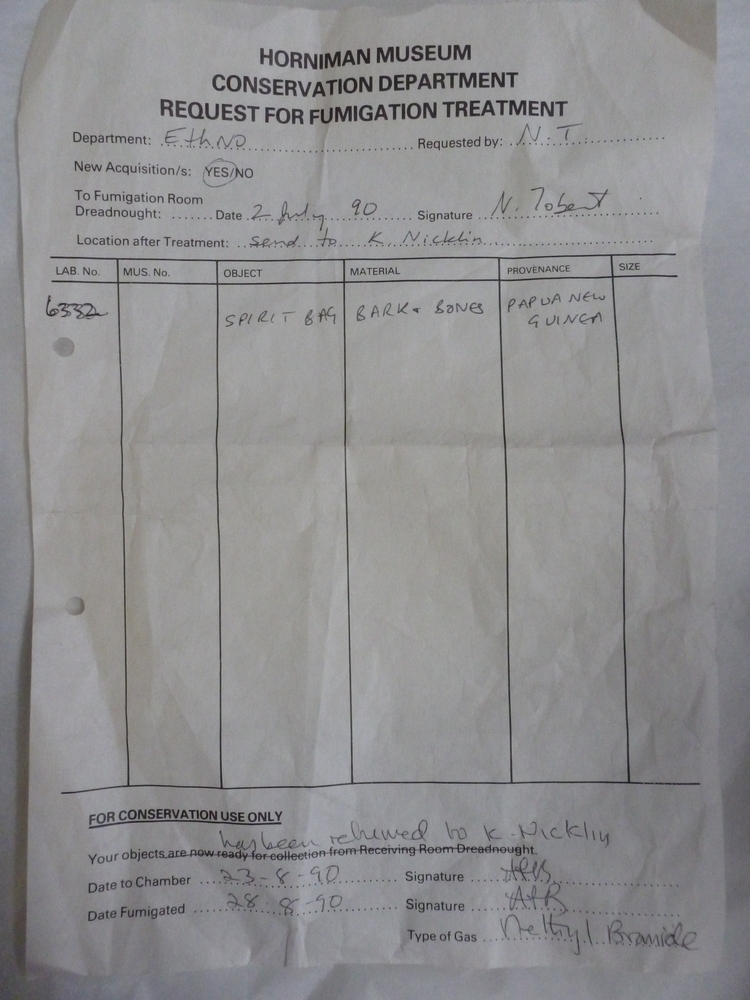
Kuman magical defence bag, consisting of a small bilum (finger-woven string bag) with attached bones of several different animal species, and pieces of bark. The whole is heavily smoked from suspension above a domestic fire. The bones will have come from sacrifices made by the owner to invoke spiritual protection from black magic. Otherwise, the bag is a perfectly normal carrying tool, and would have been used as such.
Magical Defence Bag, Kuman People, Chimbu Province, Papua New Guinea Among the Kuman people, netbags are used for a wide variety of purposes, both practical and ceremonial. When a person passes on, for example, their body ornaments and other personal effects may be bundled up in a netbag and carried on the body by their closest relation, until they feel ready to let this bundle (kuia) go. If a deceased spirit is unsettling the living and causing trouble, their next of kin may carefully dig up their skull and long bones and take them home in a special netbag. There, they will sacrifice a pig for the deceased and oil their bones to pacify them. Carved wooden ancestor figures known as gerua are similarly stored in netbags and cared for by the eldest member of a family line as their greatest treasure. Bags, then, have strong associations with containing and conveying spirits and spiritual power. Magic forms an important part of Kuman life, and takes a number of different forms: various herbal medicines are used in conjunction with quick and simple spells, and the main causes of sickness and misfortune are seen as the actions of evil water-spirits and black magic (kumo). As in most places and times where witchcraft has been feared, there is very little evidence that any Kuman people actually seek to magically attack one another. Those individuals publically accused of black magic are usually isolated older people, bad-tempered neighbours, and the co-wives of men with more than one partner. Bags such as this remarkable collection of objects are in fact everyday carriers for small personal objects, but they are festooned with the material traces of several protective magical rituals that the owner has performed to ensure his or her safety from kumo. Piglets, forest birds, and cuscus (a kind of large possum) are sacrificed to ensure the protection of benevolent spirits, and their bones, alongside pieces of protective bark, are tied into the bag that the owner takes everywhere with them. Bark fibre string, bones, bark. Late 20th century. Collected by Miss Joan Carey during missionary work in Chimbu Province 1987 - 1990.



